There’s an almost never-ending list of famous landmarks in Ireland.
Some, like the Cliffs of Moher and Blarney Castle are famous the world over while others, like Jerpoint Abbey, don’t receive half the credit they deserve.
In this guide, we’ve pulled together a clatter of Irish landmarks that are famous across the globe along with ones that many people aren’t familiar with.
The most famous landmarks in Ireland
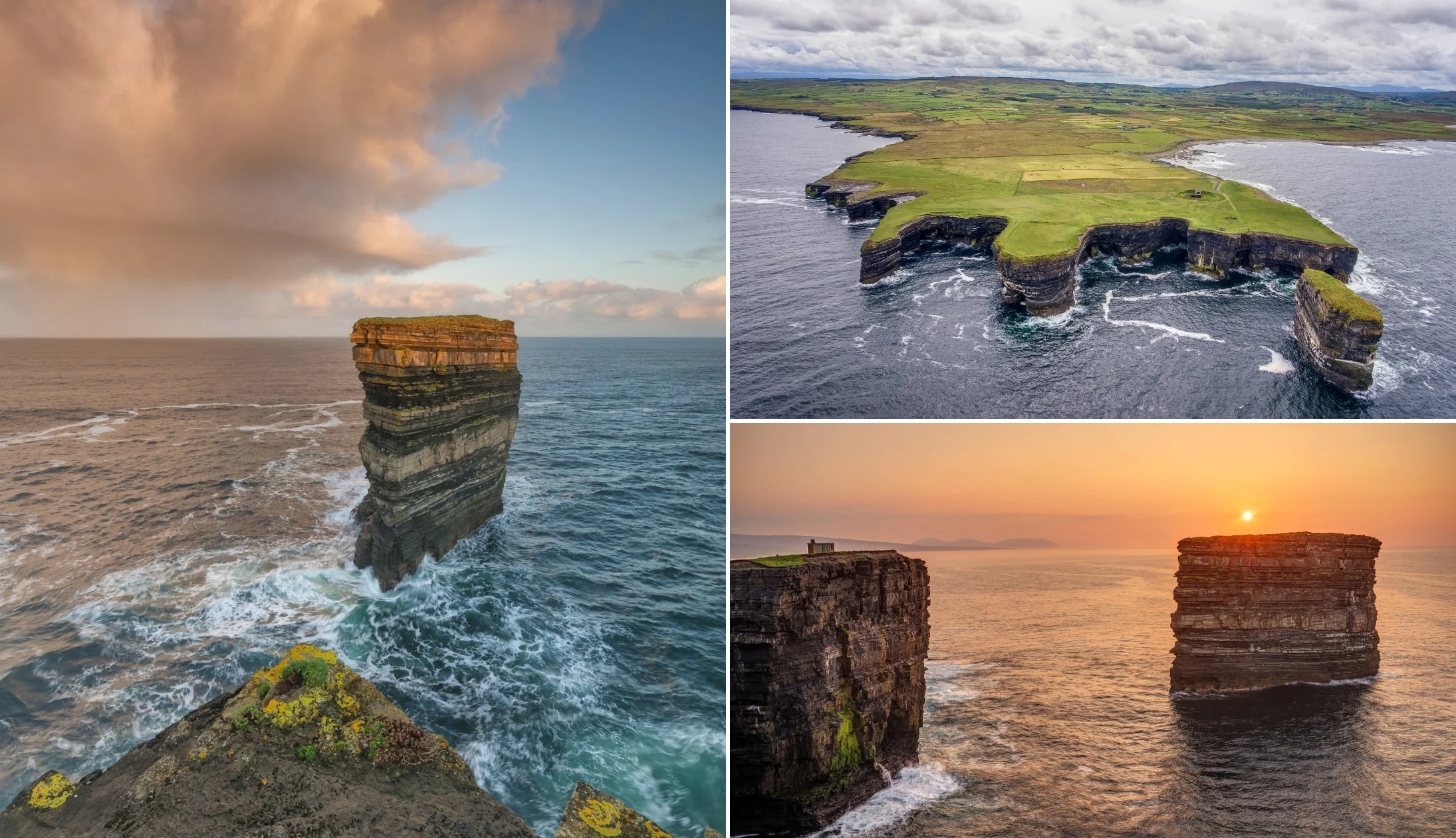
Photos via Shutterstock
Now – a quick disclaimer – this isn’t a definitive list of all of the various monuments in Ireland. That would be a very long list.
This article contains what are arguably the most famous landmarks of Ireland. Dive on in!
1. The Cliffs of Moher (Clare)

Photos via Shutterstock
The Cliffs of Moher in County Clare are easily one of the most recognisable natural landmarks in Ireland, and they’re a highlight of the Wild Atlantic Way.
They stretch for an impressive 14km (9 miles) along the rugged Clare coast in a region known as the Burren. At their highest point, the Cliffs of Moher reach a lofty 390 feet above the choppy Atlantic below.
Although you can visit them on foot via the visitor centre, one of the more unique ways of experiencing Moher is via a boat tour from either Doolin or Galway City.
2. Rock of Cashel (Tipperary)
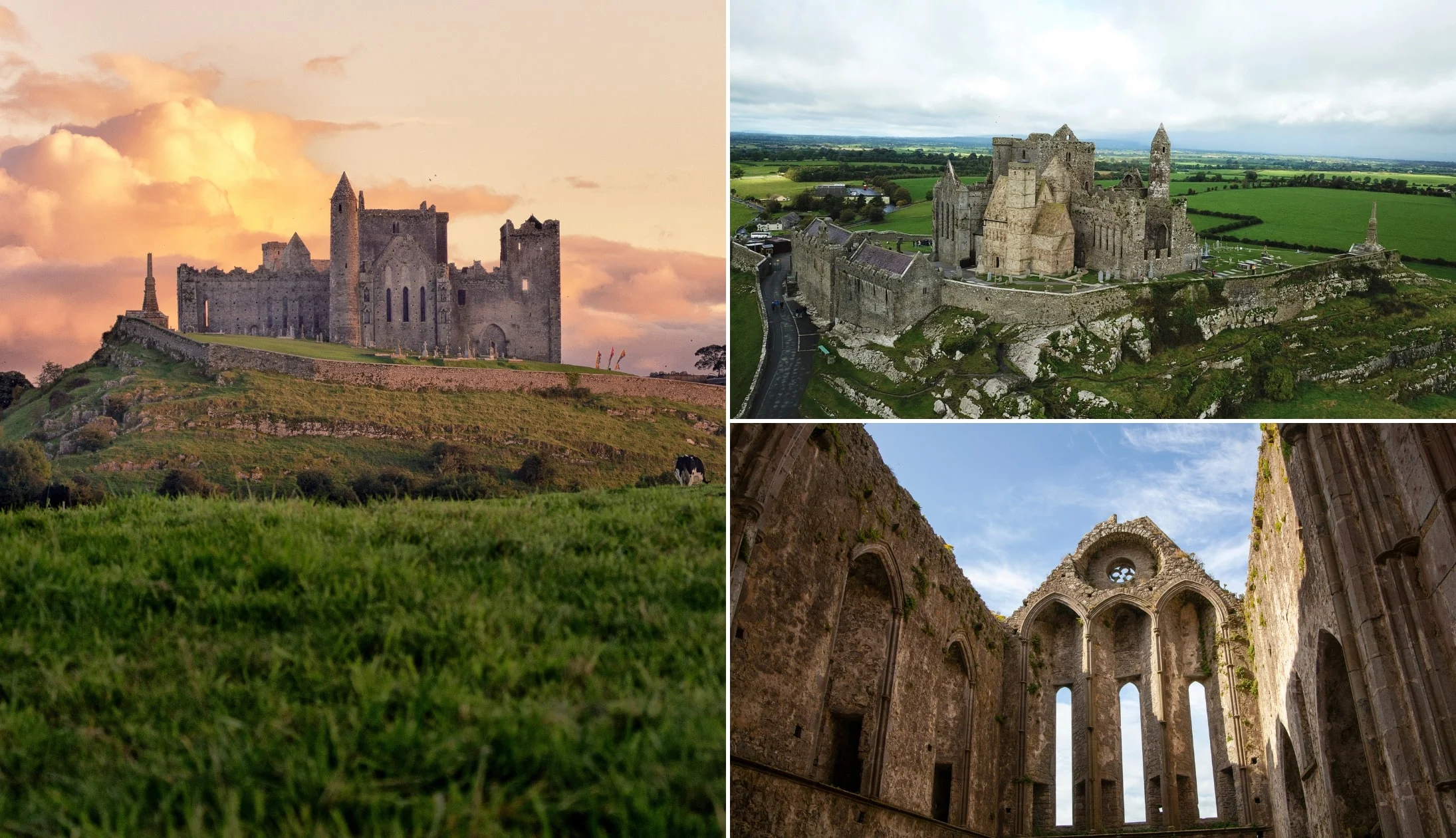
Photos via Shutterstock
Few monuments of Ireland look as fairytale-like as the magnificent Rock of Cashel in County Tipperary.
A hot-spot on Ireland’s tourist trail, the Rock of Cashel is frequently referred to as ‘St. Patrick’s Rock’.
It’s believed that St. Patrick converted King Aenghus during the 5th century. That wasn’t it’s only claim to fame, though.
The area was once the seat of the High Kings of Munster! Many of the structures that are still visible to this day date back to the 12th and 13th century.
3. Monasterboice High Crosses (Louth)

Photos via Shutterstock
One of the more historical landmarks in Ireland are the Monasterboice High Crosses in County Louth.
Monasterboice is the site of a 5th century monastic settlement and it boasts what is arguably the most impressive of the many Celtic Crosses in Ireland – The Cross of Muiredach.
It’s one of three High Crosses located in the grounds. There’s also two 14th century churches and an ancient round tower (pictured above) which was used to spot approaching attackers.
4. Newgrange (Meath)

Photos via Shutterstock
Our next stop is the ancient Boyne Valley to see one of the most ancient monuments of Ireland – Newgrange.
Part of the world-famous Brú na Bóinne complex alongside Knowth, Newgrange is a UNESCO World Heritage Site that dates back to 3,200 BC.
Many archaeologists believe Newgrange was constructed to serve an astronomically-based religion.
Every year, on the winter solstice, a beam of light shines through a roof-box at the entrance of Newgrange and illuminates the interior with sunlight.
The event requires people to enter a ‘ticket lottery’ with thousands of people from across the globe itching to see one of the most impressive Irish landmarks on its big day.
5. The Skellig Islands (Kerry)
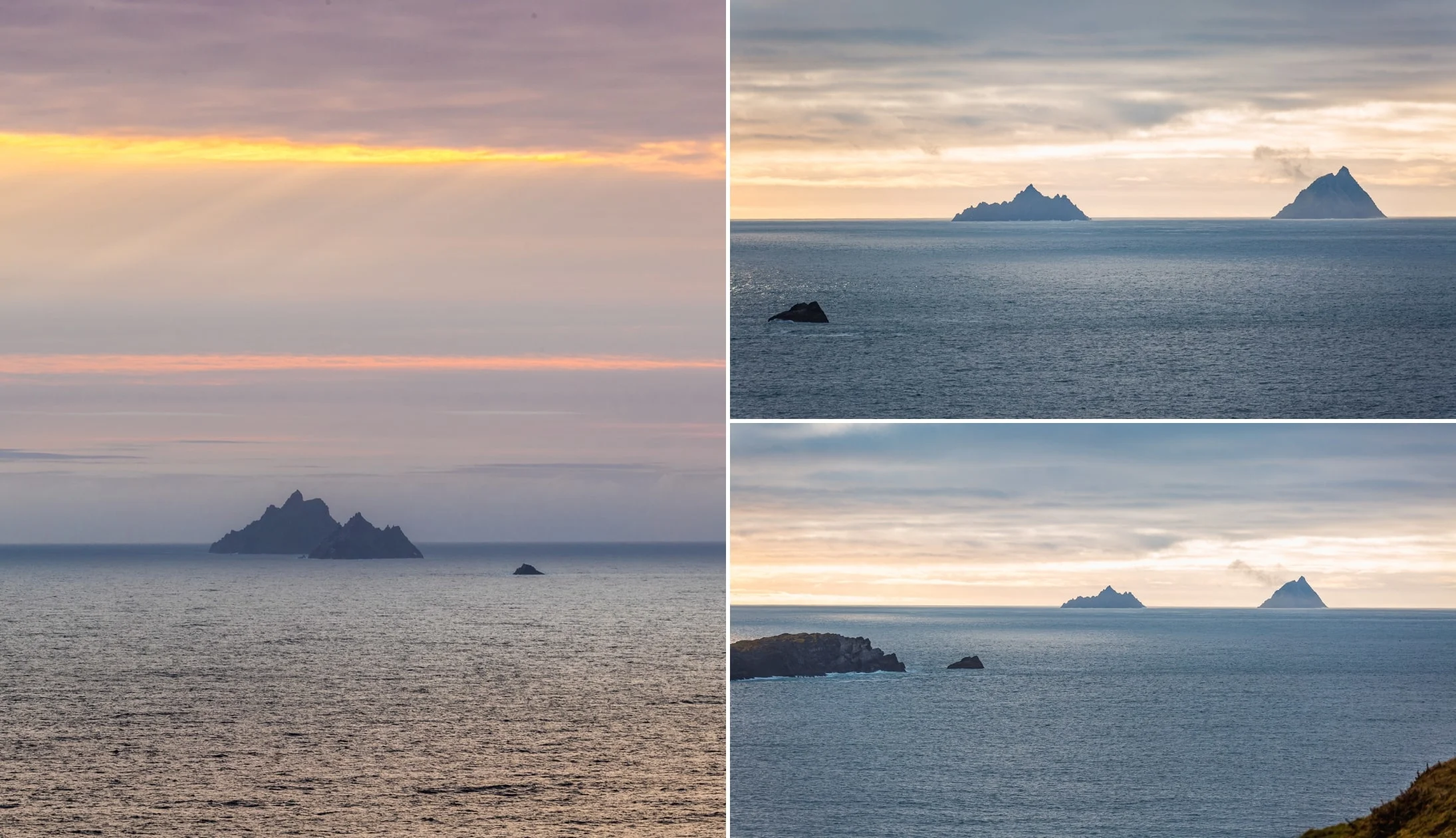
Photos via Shutterstock
Jutting out of the Atlantic off the coast of Kerry, the Skelling Islands (Skellig Michael and Little Skelling) are two of the more unique natural landmarks in Ireland.
Skellig Michael is the better-known of the two thanks to its appearance in a Star Wars movie. It’s also the only one you can visit.
Home to a thriving bird population, an early Christian Monastery from the 6th century and numerous beehive huts that were once home to monks, the Skelligs are like something from another world.
6. The Giants Causeway (Antrim)

Photos via Shutterstock
The Giant’s Causeway topped the list in our guide to the most famous landmarks in Northern Ireland for good reason.
As was the case with Newgrange, the Giant’s Causeway is a UNESCO Heritage site and it is believed that it dates back over 50 million years!
The most unique features of this spectacular corner of Ireland are the 40,000+ black basalt columns that jut proudly out of the sea.
Set against the green cliffs of the Antrim Coast, the columns are a sight to behold and give the impression that you’re walking in another world.
7. Benbulben (Sligo)
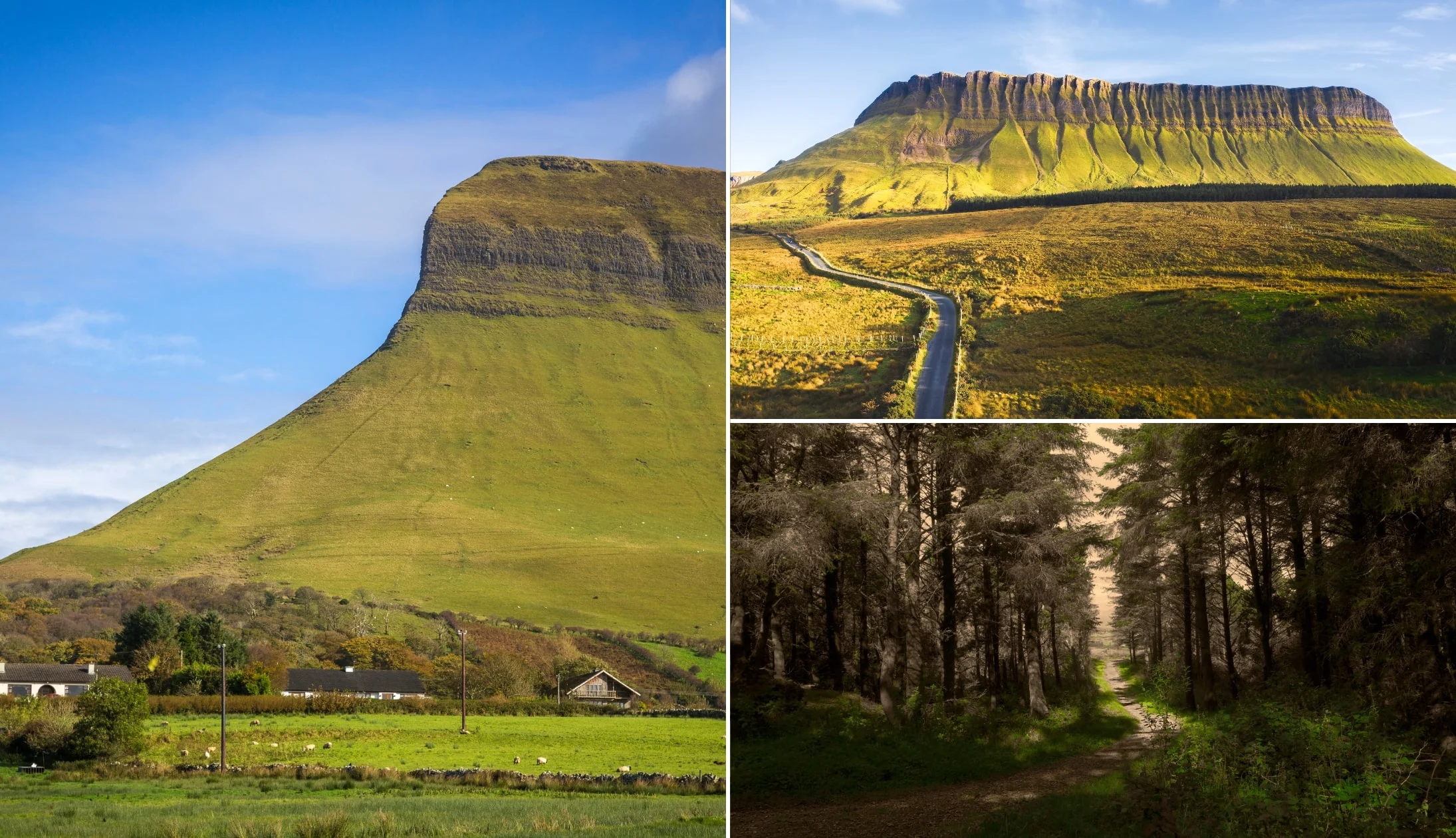
Photos via Shutterstock
Few of the natural landmarks in Ireland deliver a stop-you-in-your-tracks moment like Sligo’s table-top-like Benbulben.
Part of the Dartry Mountain range, the very distinctive Benbulben was created by different responses to limestone erosion.
You’ll see it from afar from many parts of the county and its unique appearance never fails to catch the eye.
It’s best seen on the brilliant Benbulben Forest Walk which takes the guts of 2 hours and which offers a good eyeful of the mountain from close up.
8. Christ Church Cathedral (Dublin)
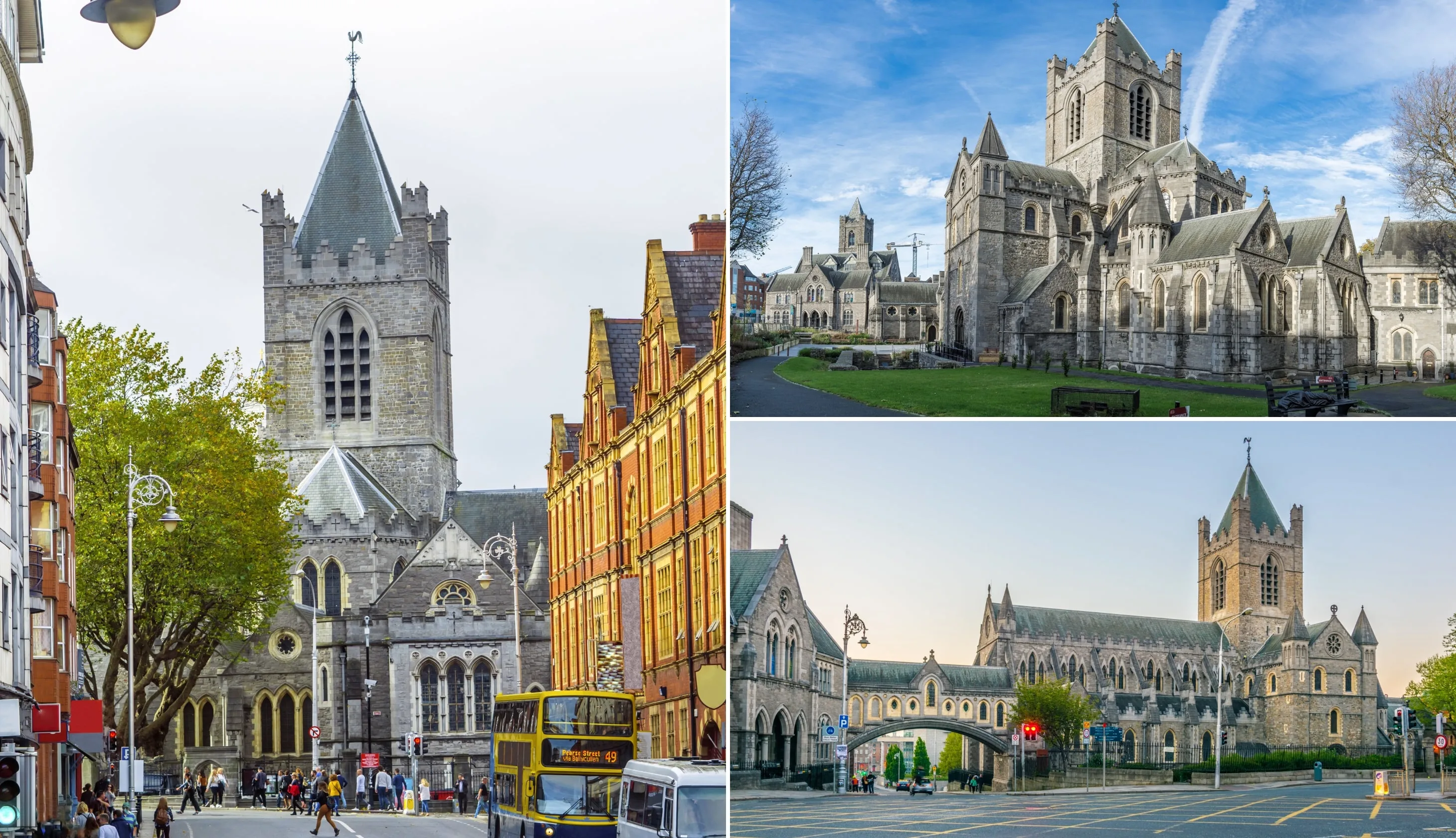
Photos via Shutterstock
Christ Church Cathedral is one of the more major landmarks in Ireland due to it being one of the first attractions many tourists visiting the capital explore.
Located right in the heart of Dublin City Centre, the cathedral was founded by a Viking king during early 11th century, making it nearly as old as the city itself!
Manuscripts date Christ Church Cathedral to its current location at around 1030. The current cathedral was rebuilt in 1172 .
9. Dun Briste (Mayo)

Photos via Shutterstock
You’ll find the towering sea stack known as Dun Briste at Downpatrick Head in County Mayo.
It, along with many of the North Mayo coast’s attractions, is one of many natural Irish landmarks that tourists tend to miss.
The surrounding cliffs at Downpatrick Head, with their unique rock formations, are a staggering 350 million+ years old.
When there’s a strong wind and the waves are crashing against the cliffs, this place make you feel like you’ve reached the place where Ireland ends.
10. Slieve League (Mayo)

Photos via Shutterstock
After Moher, the Slieve League Cliffs are arguably one of the most famous landmarks in Ireland located on the Wild Atlantic Way.
They are some of Europe’s highest sea cliffs and the views on a clear day are outstanding.
You’ll find them in Donegal a short spin from the county town. You can (during the off-season) drive right up to the viewing point.
11. The Burren (Clare)
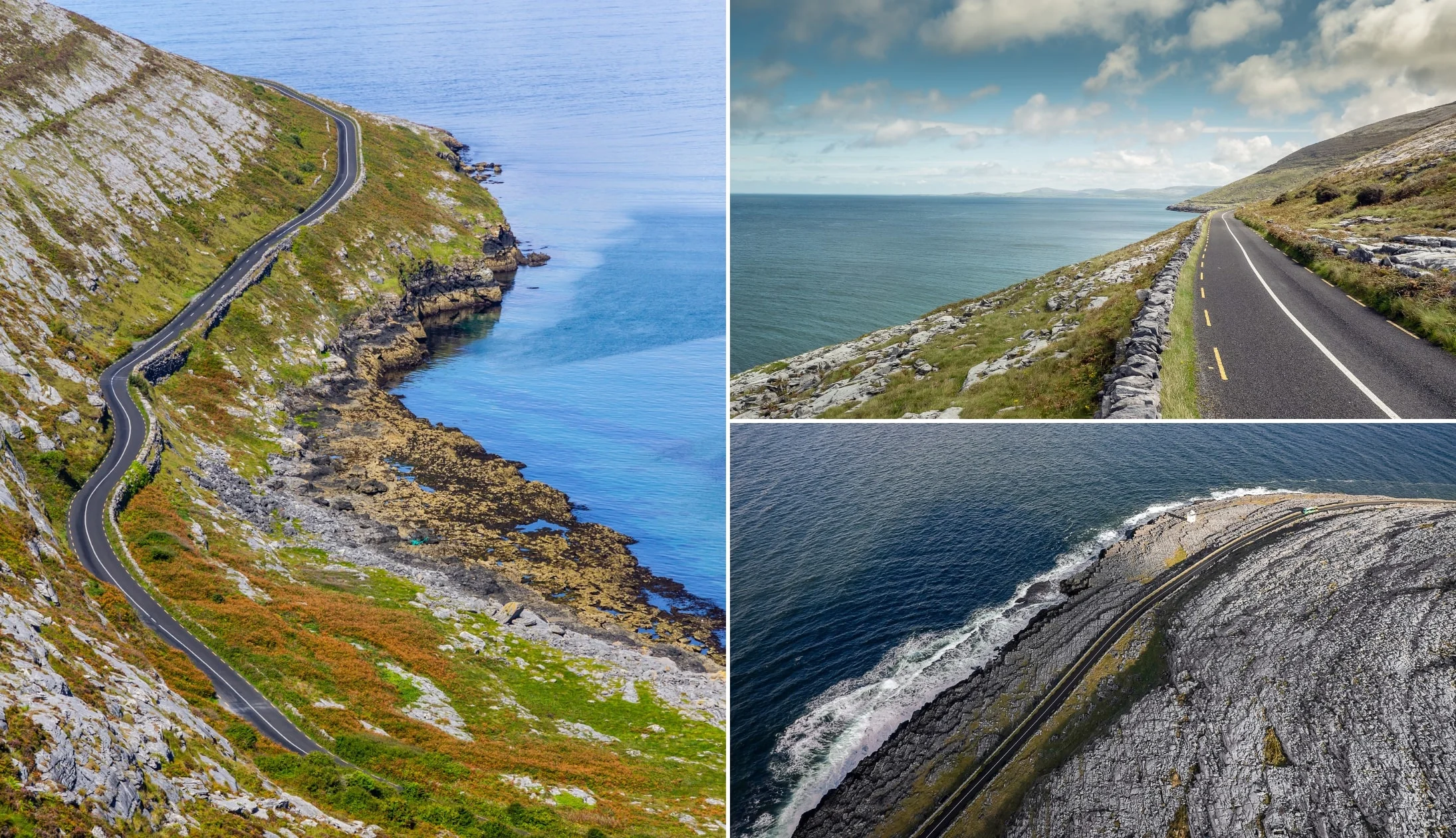
Photos via Shutterstock
The Burren National Park in County Clare covers an area of around 1,500 hectares while the wider Burren region boasts 200 sq km and includes everywhere from the Aran Islands to the Cliffs of Moher.
Although it’s one of the more popular places to visit in Ireland, many people that visit the Burren leave underwhelmed, as they rock up (terrible pun, I know…) without a good plan of action.
If you follow the Burren Drive, you’ll visit everywhere from Doonagore Castle and Father Ted’s House to Doolin Cave, Poulnabrone Dolmen and the Aillwee Caves.
12. Kylemore Abbey (Galway)

Photos via Shutterstock
The fairytale-like Kylemore Abbey in Connemara is arguably one of the most Famous landmarks in Ireland thanks to its appearance on a million+ postcards.
Built in 1867, the magnificent Kylemore Abbey has witnessed its fair share of romance, tragedy and innovation over the years.
Kylemore is now home to the Benedictine nuns, who’ve been living there since 1920. A visit here is one of the more popular things to do in Galway, and the place gets mobbed at times.
If you can, try and arrive either when it opens or in the hours before it closes.
13. Hook Lighthouse (Wexford)
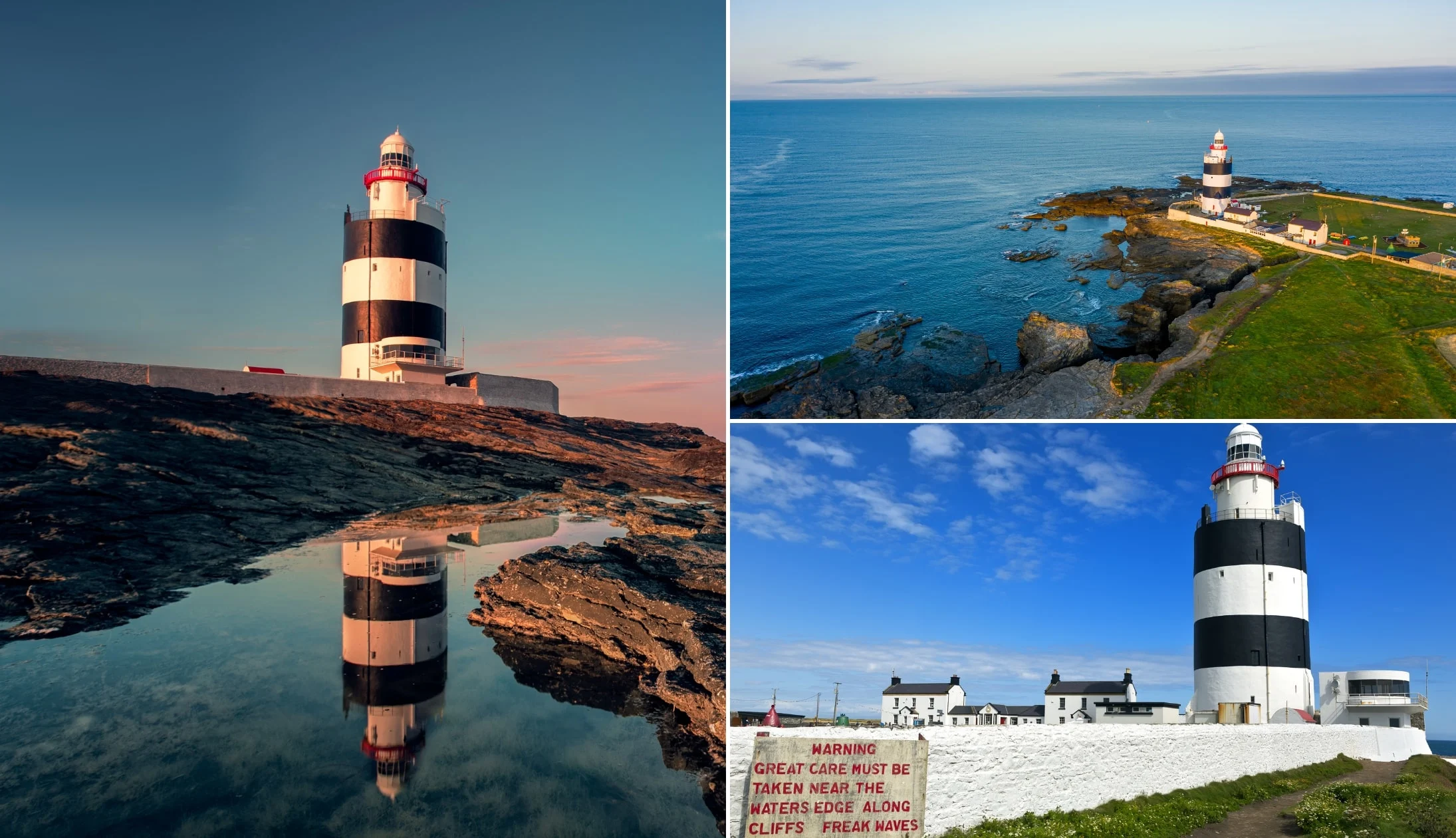
Photos via Shutterstock
If you’re looking to experience historical landmarks in Ireland, look no further than County Wexford’s Hook Lighthouse.
Located on the wild Hook Peninsula, Hook Lighthouse is one of the oldest operational lighthouses in the world.
In fact, there has been a lighthouse of some shape or form in this point since the 5th century when a Welsh monk called Dubhán established a monastery just north of Hook Head.
14. Jerpoint Abbey (Kilkenny)

Photos via Shutterstock
Few monuments of Ireland are as impressive to visit as the ancient Jerpoint Abbey in County Kilkenny.
If you’re not familiar with it, Jerpoint Abbey is one of the best-preserved Cistercian abbeys in Ireland and it dates to the 12th century.
The abbey thrived for hundreds of years until King Henry VIII brought in a Dissolution of the Monasteries act around 1536.
Fast forward to 2024 and the abbey is a joy to ramble around, despite the fact that much of it is in ruin.
15. Croagh Patrick (Mayo)
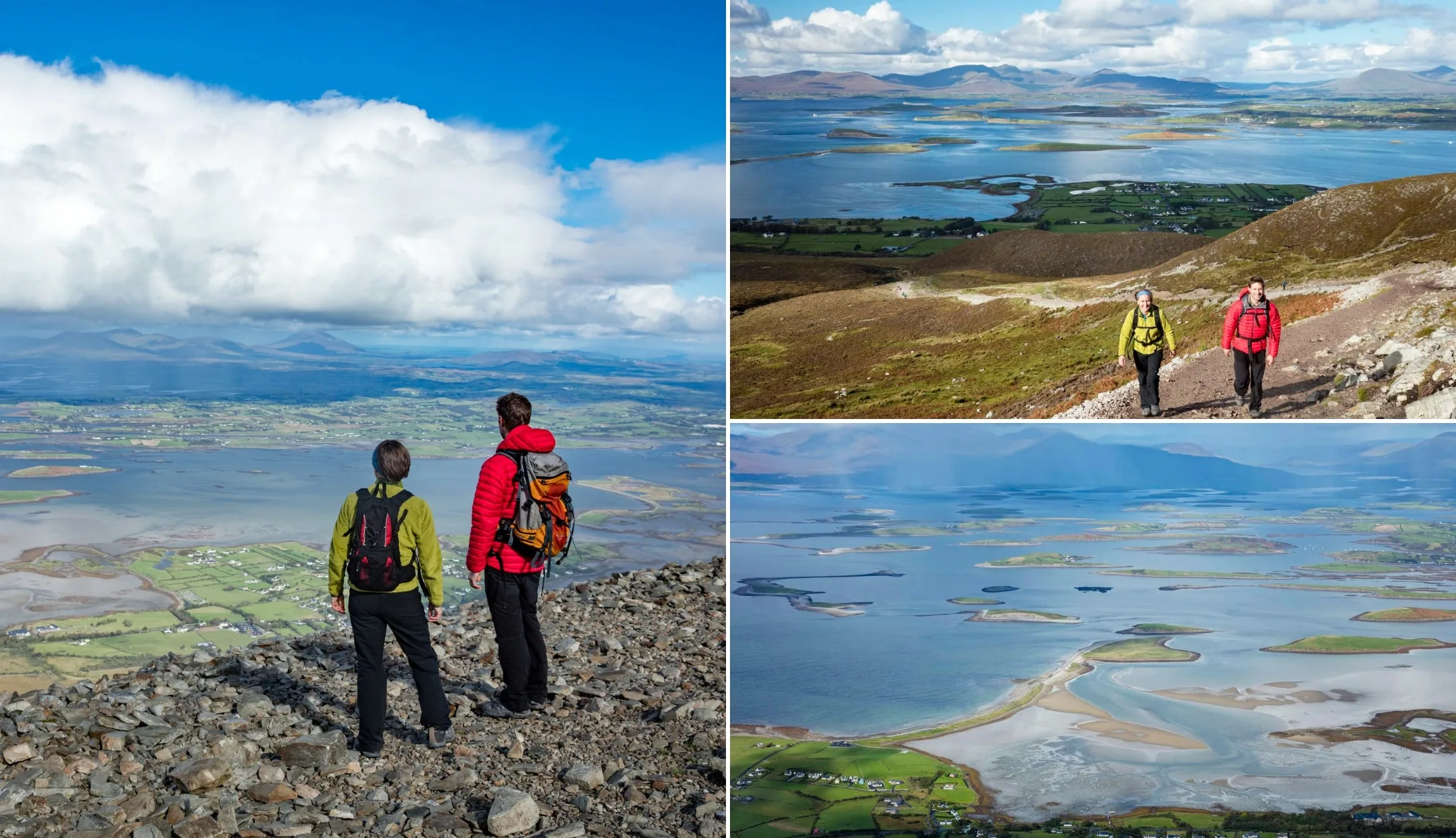
Photos courtesy Gareth McCormack/garethmccormack via Failte Ireland
A peak steeped in Irish mythology and history, Croagh Patrick is one of the most popular hikes in Ireland thanks to the other-worldly views it offers on a fine day.
You’ll find it a handy spin from Westport Town where pilgrims have been making the ascent to its summit for hundreds of years.
It’s a challenging climb to the top that takes the guts of 4 – 5 hours. However, the views of Clew Bay and its many islands make the effort well worth it.
16. Muckross Abbey (Kerry)

Photos via Shutterstock
Muckross Abbey was founded in 1448 and it’s one of the more popular stops along the Ring of Kerry.
Its history is a turbulent one and the abbey was destroyed and rebuilt many times.
The friars that lived in the abbey were regularly subjected to raids. They were also persecuted by Cromwell’s forces, like many others.
Now, even if you’re in no way interested in old ruins, the abbey here is worth a visit. Mainly thanks to the ancient yew tree that stands right at its centre.
17. Mizen Head (Cork)

Photos via Shutterstock
Mizen Head in West Cork is the southern most point on the island of Ireland and it’s a great (but very windy!) place to visit at any time of year.
One of the reasons that the mighty Mizen Head is one of the most famous landmarks in Ireland is due to the fact that it was often the last bit of Europe that many of those on transatlantic shipping journeys laid their eyes upon.
You’ll find it on the wild and remote Mizen Peninsula where it’s home to a mini-museum, a signal station and a bridge that you can cross while gazing out at the surrounding cliffs.
18. King John’s Castle (Limerick)
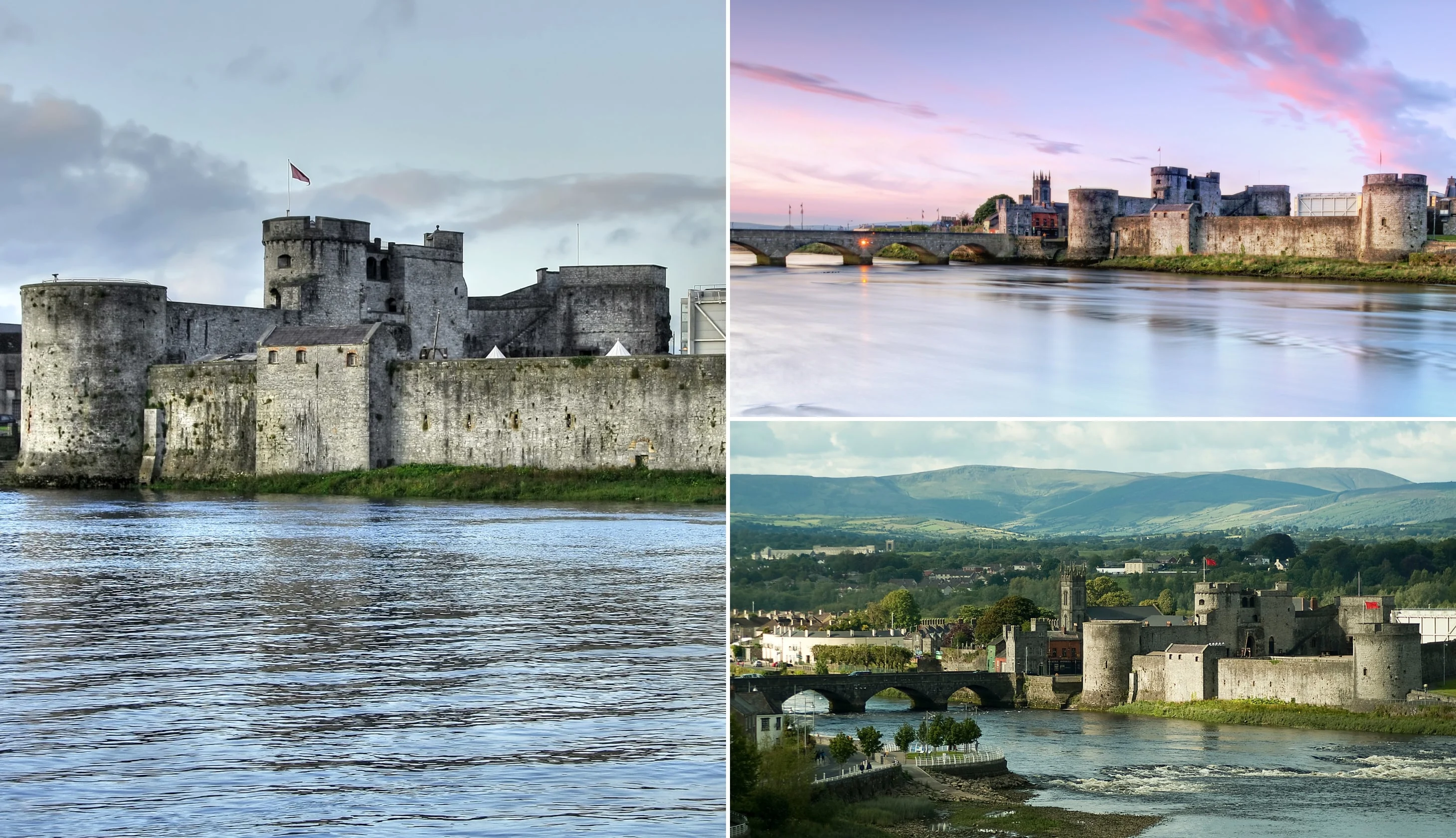
Photos via Shutterstock
You’ll find King Johns Castle in Limerick City where it’s strategically located on King’s Island, overlooking the waters of the River Shannon.
Similar to many Irish castles, King John’s is situated on an ancient site that was once home to a Viking settlement.
The building of the castle was ordered, unsurprisingly enough, by Kind John around 1200 and it’s believed to be one of the best-preserved Norman castles in Europe.
19. The Guinness Storehouse (Dublin)

Photos © Diageo via Ireland’s Content Pool
The Guinness Storehouse is another of the most famous landmarks in Ireland. It’s Ireland’s most visited tourist attraction, anyway!
Standing proudly at St. Jame’s Gate over near Dublin’s Phoenix Park, the factory is located on the same site where Arthur Guinness took out 9,000-year lease in 1759.
You can take either a self-guided or a guided tour here and both finish up in the impressive Gravity Bar where you’ll be treated to exceptional views of Dublin City and beyond.
20. Glendalough Monastic Site (Wicklow)
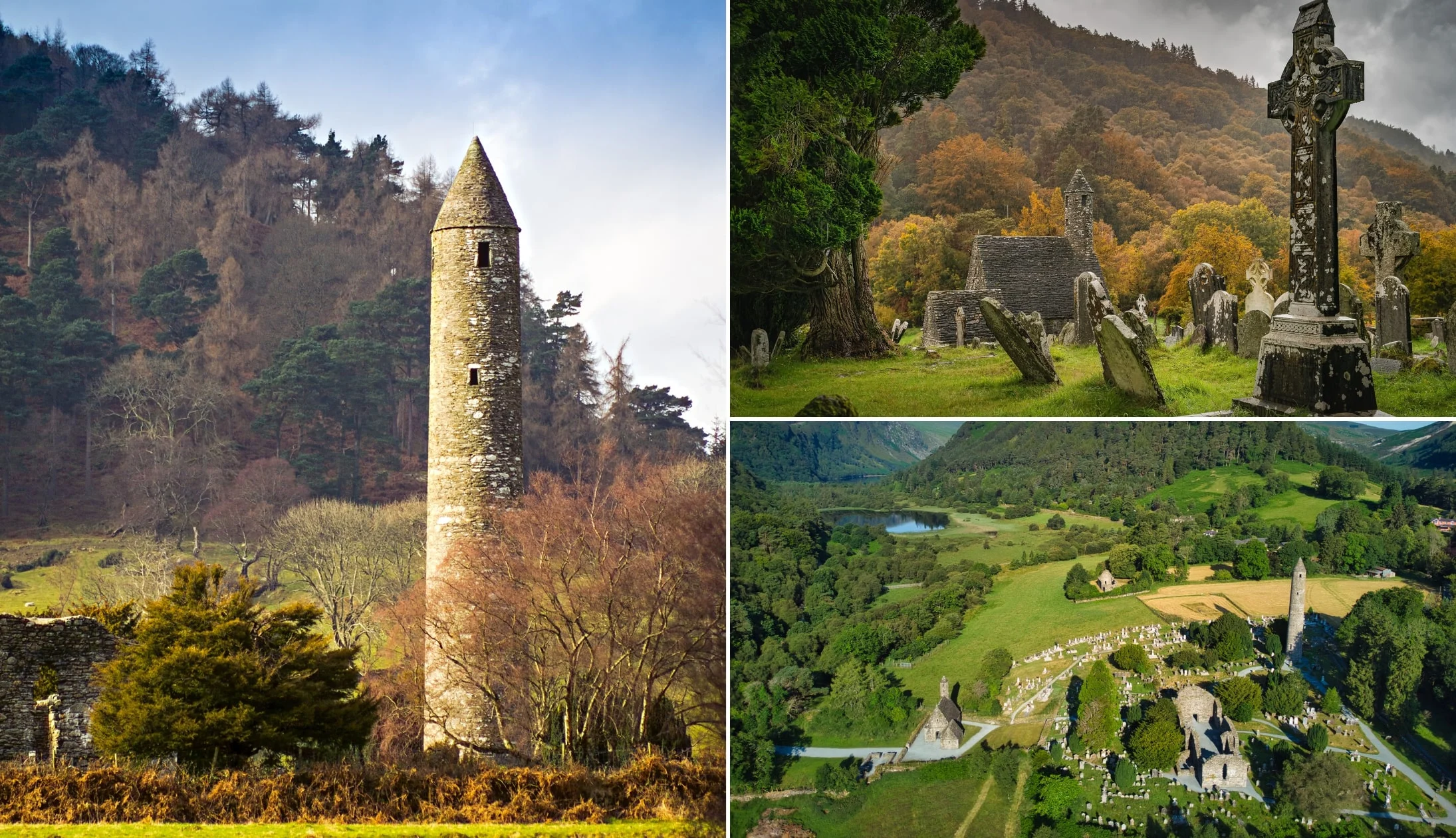
Photos via Shutterstock
Glendalough Monastic Site is a fine spot for a stroll at any time of year and it has been attracting pilgrims, tourists and locals for thousands of years.
The Monastery was founded during the 6th century by St. Kevin as a place where he could escape from the world.
He lived for a short time in a cave at the Upper Lake which is now known as St. Kevin’s Bed. In the Monastery, you’ll find a round tower, a cemetery and some ruins.
21. Carrauntoohil (Kerry)
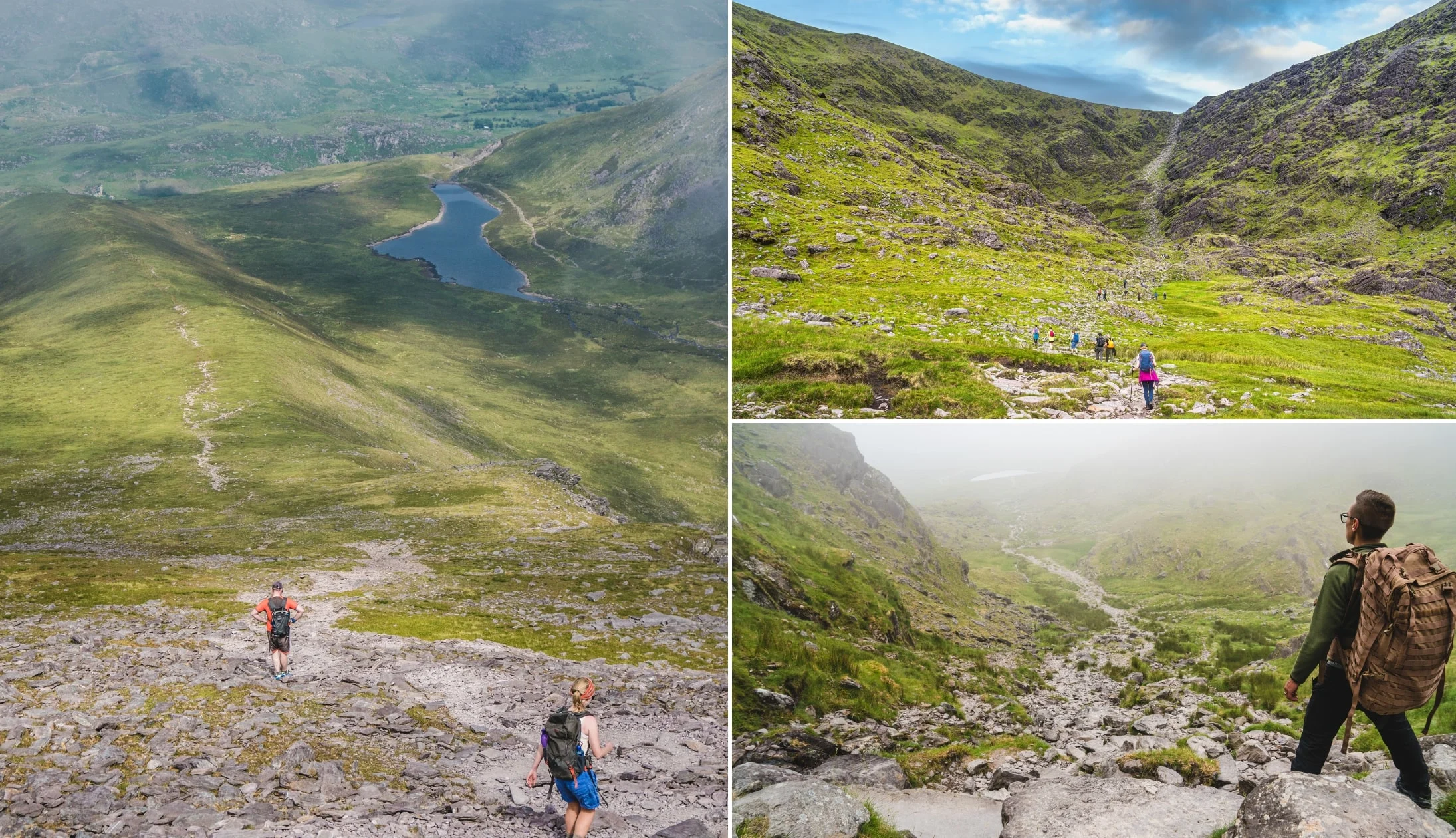
Photos via Shutterstock
Carrauntoohil is, at 2,407 feet in height, the highest mountain in Ireland.
It’s part of the MacGillycuddy’s mountain range and the most well-trodden route up it is via the Devil’s Ladder from Cronins Yard.
This isn’t a hike to take lightly. The trail takes roughly 6 hours to complete but the terrain is difficult and conditions can change in an instant, so great care is needed.
22. Fanad Lighthouse (Donegal)

Photos via Shutterstock
Fanad Lighthouse in County Donegal is an impressive sign, especially at sunrise or sunset.
It was built after a Royal Navy frigate was wrecked close by at the latter end of 1811, taking 250+ lives with it.
Despite its prominence, many other ships have been wrecked nearby, including the S Empire Heritage which went under in 1944.
23. The Free Derry Corner (Derry)
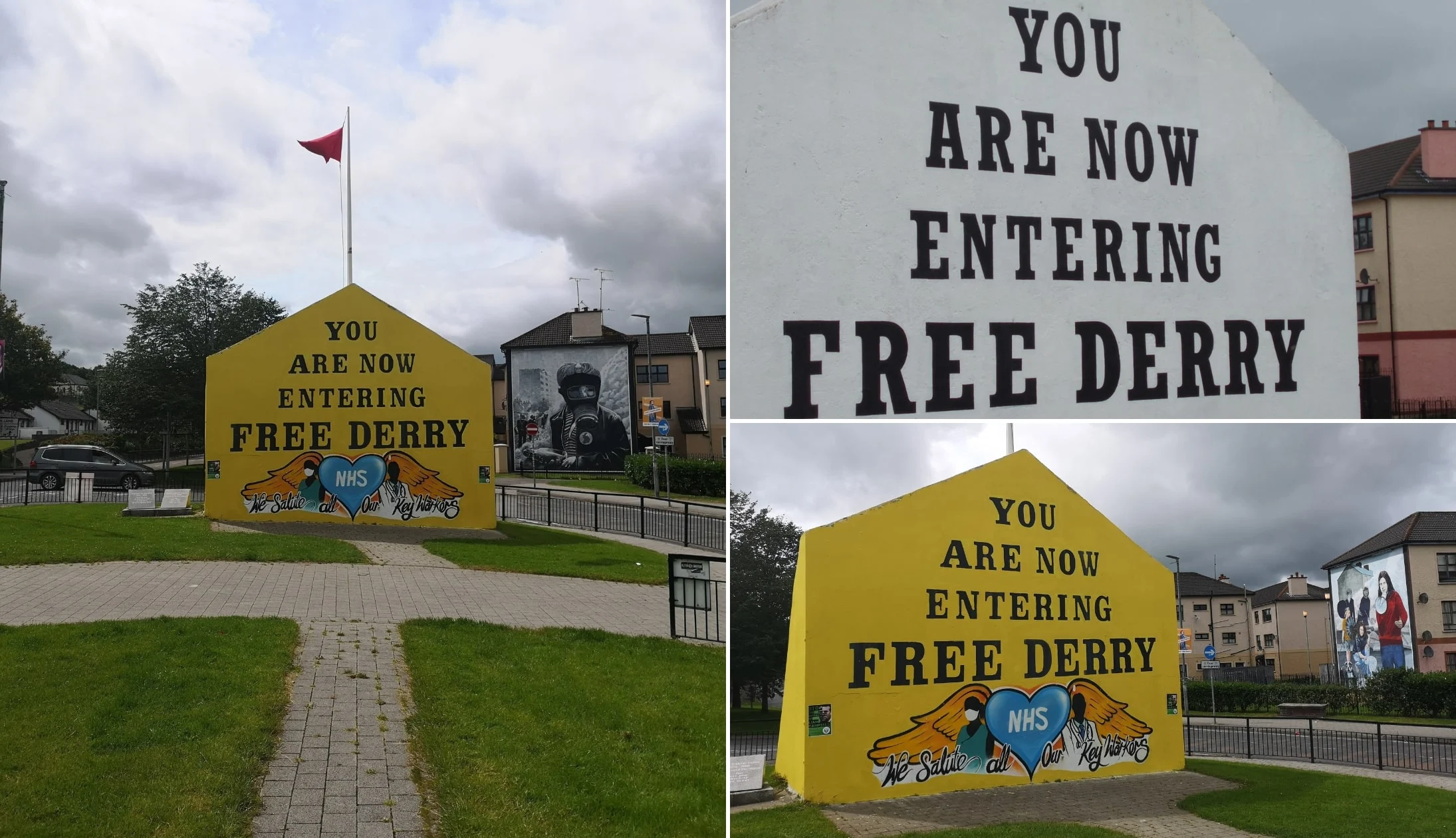
Left and bottom right photo: The Irish Road Trip. Top Right: Shutterstock
The Free Derry Corner is one of the more historical landmarks in Ireland and you’ll find it in the Bogside in Derry.
Although it’s not very old, the corner is synonymous with the the city’s turbulent past.
The story of the Free Derry Corner began on January 5th 1969 when a local activist painted ‘You are now entering Free Derry’ on the corner.
Images of the corner have be seen in history books, documentaries and on many news reports over the years.
24. The Deck of Cards (Cork)

Photos via Shutterstock
The Deck of Cards in Cobh is one of many famous landmarks in Ireland that gained its fame from social media.
The ‘Cards’ are a row of colourful houses that are set against the backdrop of St Coleman’s Cathedral and the nearby harbour.
Seeing them from the view on the left above can be both dangerous and tricky, as the view pictured is taken from on top of a high wall.
25. Rock of Dunamase (Laois)
The Rock of Dunamase in County Laois combines history with glorious valley views.
The location was chosen for its strategic position overlooking the surrounding area and ‘the rock’ was built on a site of an early Christian settlement.
The Rock of Dunamase was part of a dowry (things of value brought by a bride to her marriage) when the daughter of the King of Leinster married Strongbow, a Norman in 1170.
The castle thieved until 1650 when it was destroyed by Cromwell’s troops. It now stands in ruin.
26. Glencar Waterfall (Leitrim)
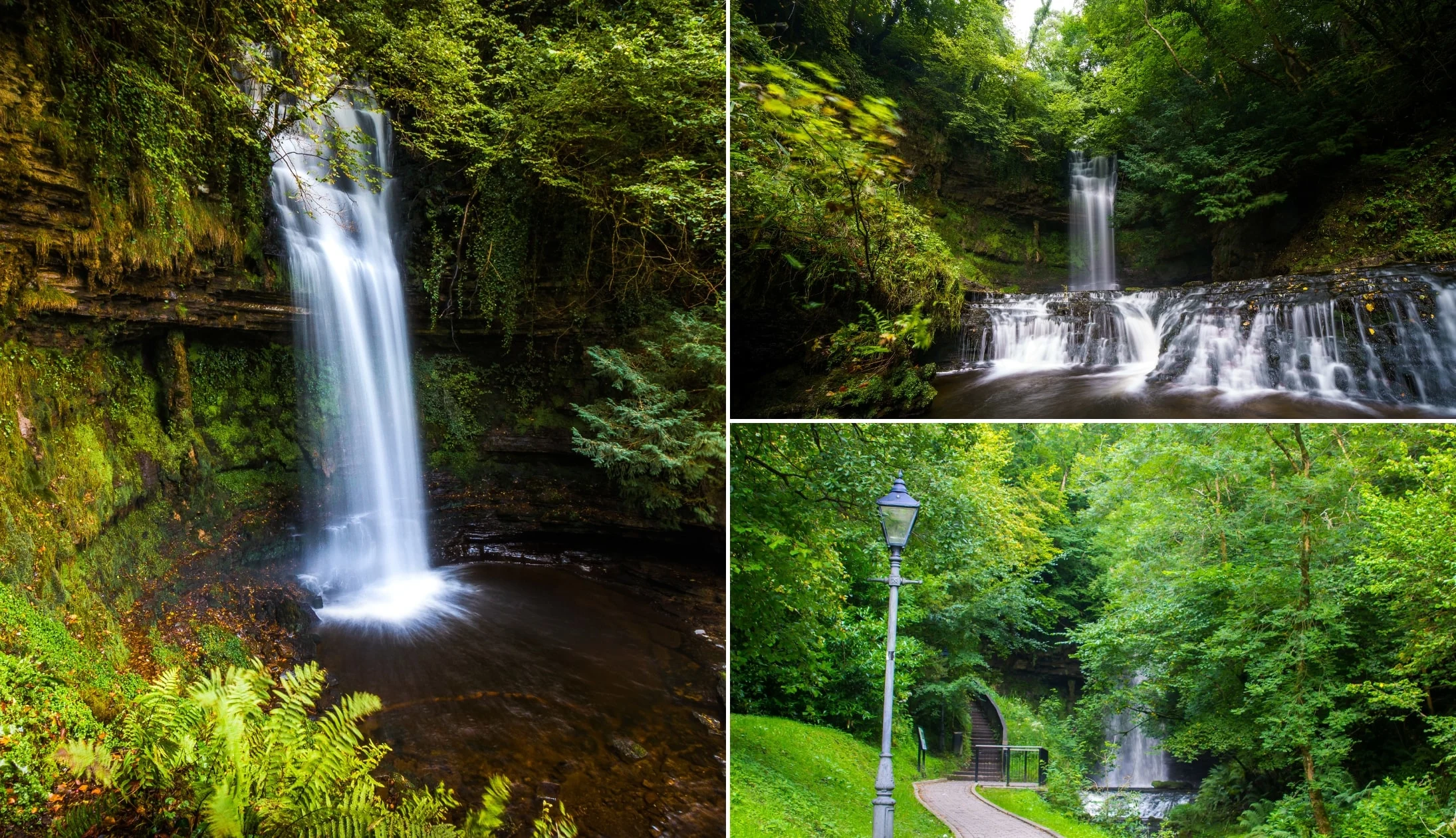
Photos via Shutterstock
Few natural landmarks in Ireland have inspired as much creative minds as Glencar Waterfall in Leitrim.
If you’re familiar of the works of WB Yeats, you’ll remember the mentions of Glencar Lough and it’s waterfall.
Today, it’s one of the more notable attractions on the Wild Atlantic Way and it can be found a short stroll from the nearby car park.
27. Dun Aonghasa (Galway)
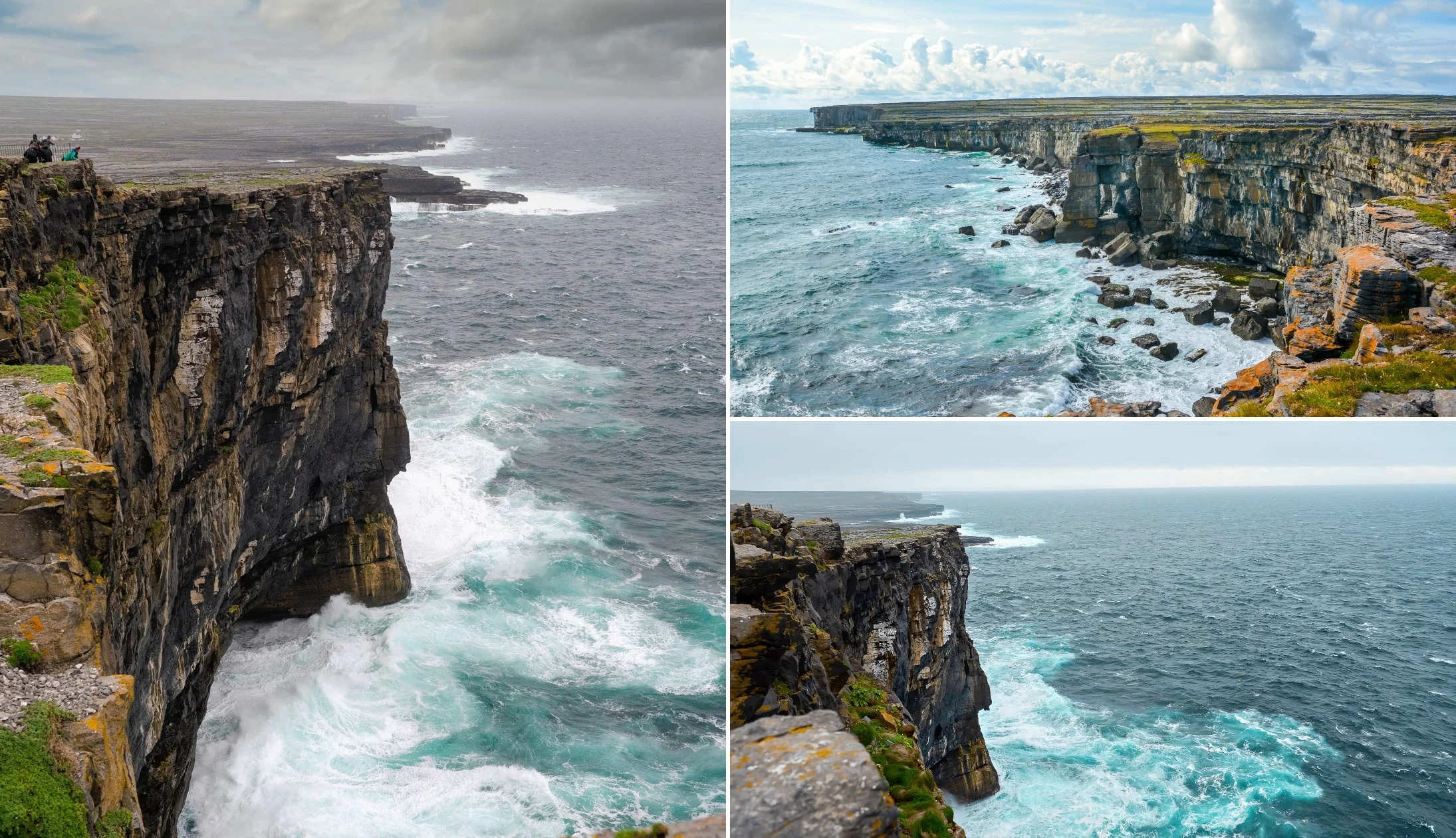
Photos via Shutterstock
Few natural landmarks in Ireland have received as much attention as Dún Aonghasa in 2024 (Achill Island’s Keem Bay got its fair share of limelight, too!).
The fort on Inis Mor was one of several Banshees of Inisherin filming locations due to its dramatic coastal location.
Dún Aonghasa was originally constructed c.1100BC. Some time later, around 700-800 AD, it was re-fortified.
If you visit, the craggy cliffs, the immense power of the wind and the crash of the waves below will send shockwaves through your senses.
28. Sean’s Bar (Westmeath)
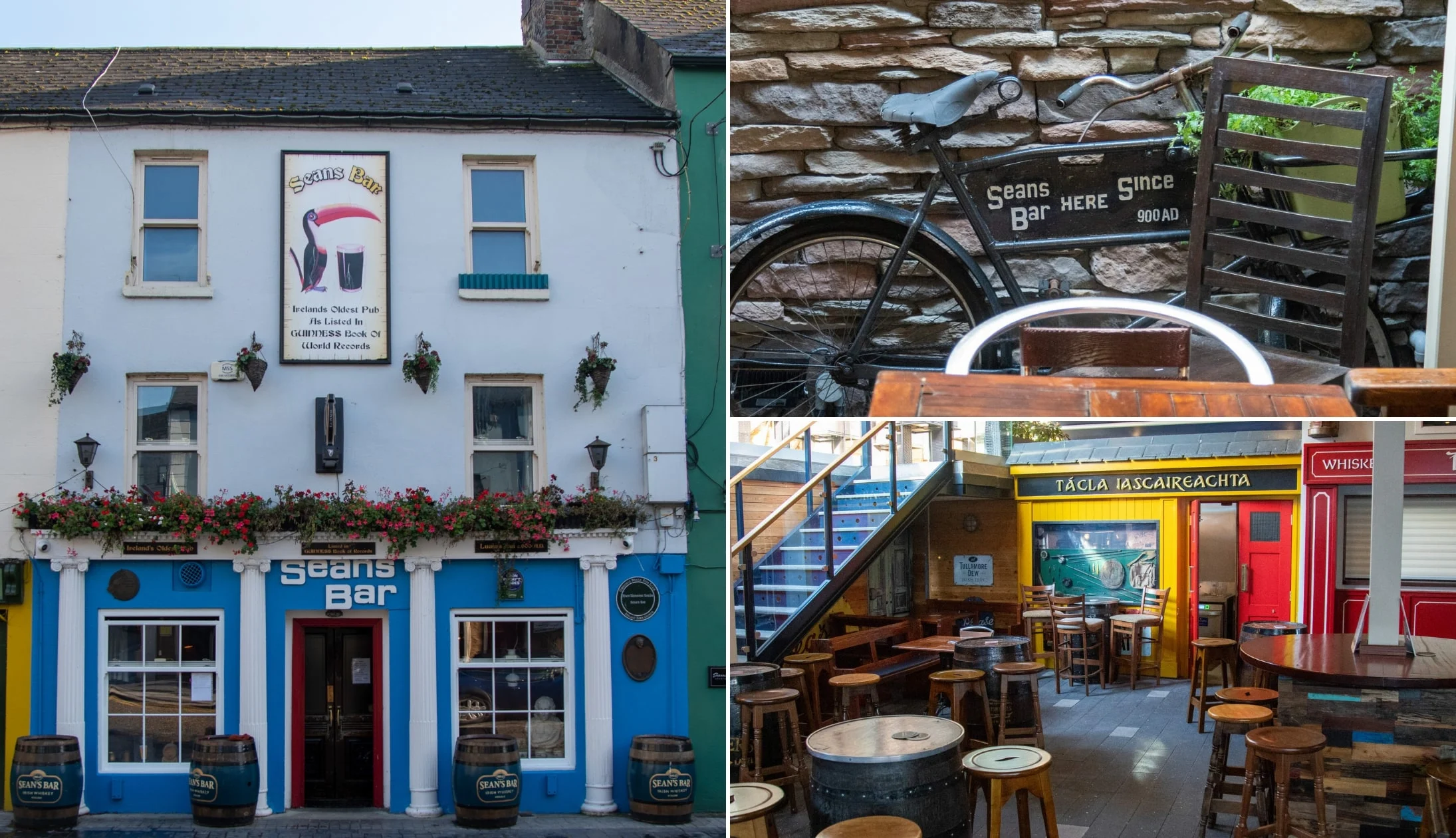
Photos courtesy Sonder Visuals via Ireland’s Content Pool
Dating back to 900AD, Sean’s Bar in Athlone Town in County Westmeath is the oldest of the many pubs in Ireland.
It’s a short stroll from both Athlone Castle and the banks of the River Shannon and it’s age was verified during an excavation in 1970.
During the ‘dig’, walls that were built using the wattle and daub technique were discovered and it’s believed that they date back to the 9th century.
29. Reginald’s Tower (Waterford)

Photos courtesy Waterford Museum of Treasures via Failte Ireland
Reginald’s Tower stands proudly in the centre of Waterford City where its now a Viking museum that showcases the city’s rich history.
The 16m-high round tower is the oldest civic building in Waterford and it is thought to have been built between 1253 and 1280.
It’s believed that the tower has named after one of the area’s Viking rulers – Raghnall Mac Gilla Muire – and it was used as a lookout tower.
30. The Dunbrody Famine Ship (Wexford)

Photo left: Via Failte Ireland. Others ©Tourism Ireland
The Dunbrody Famine Ship is another of the major landmarks in Ireland thanks to its location close to Rosslare Harbour, which is the arrival point for many getting the ferry to Ireland.
You’ll find it in the town of New Ross. Now, if you’re not familiar with Famine Ships, they were vessels that took people from Ireland during the Famine to far-off lands.
The original Dunbrody Famine Ship was constructed during the mid-19th century and in 1845 it left Wexford for Quebec.
The replica was built in the 90s thanks to the JFK Trust and the skill of local ship builders.
31. Dun Chaoin Pier (Kerry)

Photos via Shutterstock
We’re off to the Dingle Peninsula, next, to one of the most famous landmarks in Ireland thanks to endless social media posts.
The very unique Dun Chaoin Pier on the Slea Head drive is located in the village of Dun Chaoin, a short spin from Dingle Town.
It is the departure point for the Blasket Island Ferry and you’ll find parking near the little ticket hut (never drive down the winding path!).
Now, you don’t have to be getting the ferry to enjoy this place – you’ll be treated to a view of it and the Dingle coast from the grass above.
32. Birr Castle (Offaly)

Photos via Shutterstock
One of the more unusual historical landmarks of Ireland can be seen in the grounds of Birr Castle in Offaly.
The site has been home to fortresses since 1170 and, interestingly enough, the current castle has been inhabited by the same family that purchased it way back in 1620.
It’s on the grounds that you’ll find what was once the biggest telescope in the world. It was built in the 1840s and, for many years, people travelled from all over the world to use it.
What famous Irish landmarks have we missed?
This is by no means an exhaustive lists of all of the various landmarks and monuments of Ireland.
It excludes the like of Kilkenny Castle, Loop Head Lighthouse and plenty of other historical landmarks in Ireland.
If there’s one you feel that we need to add sharpish, shout away in the comments below.
FAQs about the monuments of Ireland
We’ve had a lot of questions over the years asking about everything from ‘What are the most notable landmarks in Northern Ireland?’ to ‘What major landmarks in Ireland are a must-see?’.
In the section below, we’ve popped in the most FAQs that we’ve received. If you have a question that we haven’t tackled, ask away in the comments section below.
What are 5 famous landmarks in Ireland?
You could argue that the most famous Irish landmarks are the Cliffs of Moher, the Guinness Storehouse, Slieve League, the Rock of Cashel and the Skellig Islands.
What is Ireland’s most famous landmark?
This is an impossible question to answer with any real degree of accuracy but we can make a strong assumption that the Cliffs of Moher and the Guinness Storehouse are two of the major landmarks in Ireland.
What is the oldest landmark in Ireland?
If you’re looking to visit very old and famous landmarks in Ireland, look no further than Newgrange, the Rock of Cashel, Muckross Abbey and Monasterboice.
Keith O’Hara has lived in Ireland for 35 years and has spent most of the last 10 creating what is now The Irish Road Trip guide. Over the years, the website has published thousands of meticulously researched Ireland travel guides, welcoming 30 million+ visitors along the way. In 2022, the Irish Road Trip team published the world’s largest collection of Irish Road Trip itineraries. Keith lives in Dublin with his dog Toby and finds writing in the 3rd person minus craic altogether.

